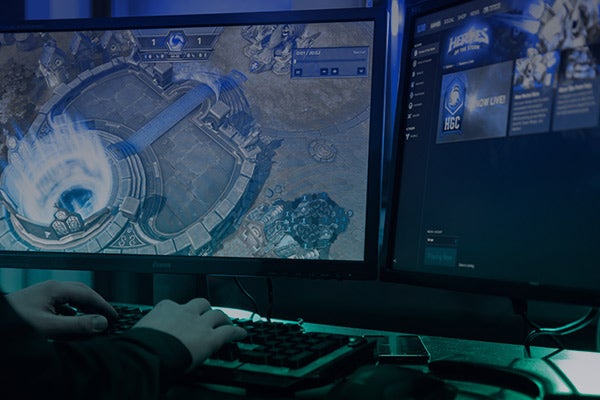
Game Development Project Management: Tips From Top Studios
The game development industry is ever changing. New technologies, massive competition, and constant growth makes it almost impossible to manage. To stay competitive, studios need to maximize game development project management to orchestrate large teams to deliver rich user experiences.
We sat down with the top producers and studio heads in the industry to learn how they balance scope, resources, and a demanding schedule. These three things are often referred to as the iron triangle of game development project management. So what makes them so successful?
How do they organize their game project management strategy for success?
In our eBook –– Master Game Development: Expert Tips From 5 Leading Studios –– you can learn how these product owners do it. They talk about how they construct their teams to enhance collaboration, streamline production methods to deliver immersive experiences, and stay on schedule.
Here are some just a few top takeaways on project management for game development.
Game Development Project Management for an AAA Studio
Studio: Electronic Arts (EA)
Titles include: FIFA, NHL, and Madden
Expert: JP Kellams
Game Development Project Management Tip: Start with a clear vison and remain adaptive.
EA producer JP Kellams has a solid background in game development, having worked on over 20 game titles. With a thorough understanding of the game culture as a whole, Kellams has been able to remedy inefficiencies common to the game development process. Today, his approach is pivotal to EA’s success.
Because the studio makes decisions just-in-time, the team works with some uncertainty of the final design. They prioritize quality and backlog management to maintain this kind of pace. Changes always occur during game development planning, so being adaptive helps the team work with the natural flow of the project instead of against.
The only way this works is to start every project by defining a clear, concise vision. From there, teams iterate towards the vision.
📘 Related Resource: Discover how Kellams builds his vision.
🔎 Looking to replace Jira with an on-prem option? Read this blog 👇🏽
Indie Studio Game Development Project Management
Studio: No Brakes Games
Titles include: Human: Fall Flat
Expert: Sitara Shefta
Game Development Project Management Tip: Support employee happiness with Agile scope management and cross-functionality.
Studio head Sitara Shefta built No Brakes Games from scratch. She brings large studio experience to direct this indie studio on a platform of sustainability, trust, respect, work-life balance, and quality. The culture is notably more relaxed than is typical to the industry. Shefta believes that happy teams make better games.
In order to maintain values like quality, sustainability, and happiness, No Brakes Games is largely Agile. They continuously release content updates and choose to build at smaller, higher-quality levels. This helps extend the lifecycle of games.
No Brakes Games recruits talent that are both very skilled in one area and also able to contribute to another. Cross-functionality is a distinguishing factor in their success, and it cultivates significant growth and diversity for the employees.
📘 Related Resource: Learn more benefits of cross-functionality.
How Huge Studio Growth Impacts Game Development Planning
Studio: Frontier Developments
Titles include: Elite: Dangerous, Jurassic World
Expert: Gerard Huke
Game Development Project Management Tip: Structure work around the needs of each specific game.
Frontier Developments has evolved from a 20-person operation to a team of 500+ people. Gerard Huke, Head of Production, has witnessed this transformation over the last 20 years. Because the studio has numerous franchises, workflows and production teams are structured around the needs of each game.
Aligning the team is key to their game production management strategy. The team has developed a unique way to organize ideas into various features and epics on a board that is helping them finding the fun in each title.
With a completed board, the team has a clear visual overview of the game early on. It’s used to communicate changes, define the features that make the cut, and create the foundation of their product backlog.
📘 Related Resource:Learn more about what your indie studio needs.
How to Manage a Game Development Team
These experts, along with two other studios, shared a lot how they not only scale practices, but alter them to best support their unique teams.
Each product owner’s approach to game development project management was unique. And they used a tool that was flexible enough to adapt. Get the full stories from all five studios.
